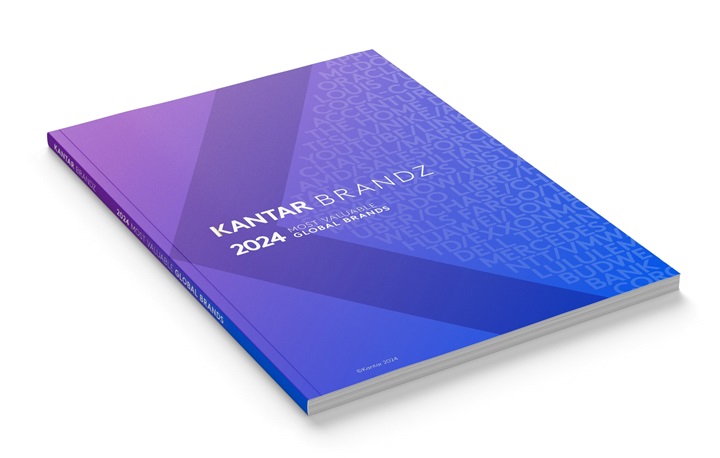It would be nice to say that such fears were completely overblown or unfounded. But the truth is more complicated. In Kantar’s latest global Sustainability Sector Index, we asked people if they had seen or heard false or misleading information about sustainable actions taken by brands. Remarkably, 52% said they had.
How does this look by cohort? What the data tell us is that the younger the cohort, the more acute the perceptions of greenwashing: 35% were 55-65 year-olds, rising to 65% among 18-24 year-olds. As Gen Z and younger Millennials become the dominant economic force, this erosion of trust will become disruptive.
Furthermore, we’ve seen that the more that people think brands are greenwashing, the more they drop them out of their consideration set. It is a short step from mistrust to rejection.
A way forward
Let's put things into perspective. What we're really talking about is trust. A 'greenwashing' brand is a brand that asks consumers to trust them on sustainability and is then perceived to have broken that trust.
Ultimately though, does it really make sense that just because one brand in a category becomes less trusted, that all brands in that category should then give up on successfully becoming trusted themselves?
Brands shouldn't be afraid to pursue sustainability just because the term 'greenwashing' now exists. All that's changed, really, is that brands now know they must pursue sustainability in the right way.
So, how can brands take steps to avoid greenwashing and inspire trust? Kantar's globally verified model of Inspiring Trust is based around the three principles for what trust means today.

The first I, Integrity, is about having clear commitments: doing what you say you're going to do and communicating your actions with honesty. Integrity is still the foundation of trust, but in today's post-truth world, people find it difficult to assess integrity, so it's not enough on its own.
Identification - a connection at a human level – is one of the most powerful sources of trust in times of disruption and uncertainty. Behavioural science tells us that we're hardwired to identify with and trust those people with a shared set of values and goals.
Finally, brands should embody the principle of Inclusion. We know that unfamiliarity is a barrier to a closer brand-consumer connection, so we need to create closeness in two ways: (1) make everyone feel that they belong; and (2) get people invested in our actions. Successful brands will make people feel empowered to make truly better choices.
Integrity in action
Integrity is about having clear commitments. In the sustainability sphere, those commitments need to be credibly connected to your category, and relevant to the here and now. For example, a 2022 Lufthansa campaign claimed, in vague terms, that the airline was protecting the world’s future, as portrayed by imagery of undersea wildlife. The problem is that such an image is clearly in dissonance with people’s beliefs (they wouldn’t directly associate plane travel with ocean health). To substantiate, the brand should raise awareness of the actions it is taking, or risk being perceived as greenwashing.Of course, climate pledges of the type that have become so popular this past decade, ‘carbon neutral by 2050’ and so on, do have implications for a wide variety of natural habitats, from pine forests to coral reefs. The problem is that, as communicated, brands’ sustainability remits have become too broad to really connect with consumers, both geographically and in terms of timespan. People feel, for instance, that 2050 commitments are so far away that they’re not real commitments. They want to see brand action now, via more tangible, actionable commitments. So, we need to create intermediary goals and provide regular updates.
Language, too, needs to become more tangible. Clearly, it’s unacceptable to lie or over-claim, but vague terms are also problematic. People, and increasingly regulators, will not tolerate ‘carbon neutral’. Always try to be straightforward, and support claims with credible evidence and clear comparisons. Imagery, too, should avoid general clichés in favour of more specificity; a photo of your product nestled in a green field will not suffice.
Identification in action
The first step towards winning on Identification is to understand the challenge you’re up against. Assume cynicism: 67% of people surveyed say they worry brands are involved in social issues just for commercial reasons. Still, although people will be critical, that doesn’t mean you shouldn’t talk about your actions. Today, 57% of people feel that it is really hard to tell which products are good or bad ethically or for the environment, a genuine source of frustration. But, it’s a frustration that people want solved. Consumers want to better understand their choices, and your brand needs to tell its story in a way that helps them do that. If you don’t, the default perception of your brand will likely be poor. The best sustainability stories are authentic, honest and informative. To be authentic, you need to commit to doing more than making symbolic, time-limited gestures. These days, for example, brands that change their logos to rainbow colours during Pride, but don’t do anything to support this community the rest of the year, will attract negative consequences.
What succeeds, by contrast, are messages that are simple, yet direct, and even somewhat humble. Every business and brand is in transition, but few have the courage to be transparent about it. You don’t need to have all the answers: Be honest about the journey you’re on. Consumers will thank you for it.
Inclusion in action
What Inclusion seeks to build is a sense of belonging. It’s about finding ways to bring consumers into your sustainability programmes, rather than holding them at arm’s length. Today, only 37% of people agree that brands do a good job of representing people similar to themselves or their community. This fact of course has implications for diversity, equity and inclusion efforts, but it also ties into pricing strategy. 68% of people currently believe that products that are better for the environment and society are more expensive; in other words, that sustainability is a luxury. Such beliefs can lead to ‘greenwashing’ suspicions that brands are ultimately using sustainability as a profit driver, rather than really embracing the call to help people live more sustainably.
Inclusion, then, can take the form of making it easier for people to make better choices and ultimately make a difference. Today, people are sceptical about whether their actions are moving the needle: Only 39% say they clearly understand how their shopping behaviours can contribute to positive environmental or social change. Third-party certifications can help allay some of this confusion: 61% of people want these certifications to help guide their decision-making. In other words, don’t make up your own logos, it adds to the confusion. Work with recognised players. From there, you should make it clear how your efforts empower people to make better choices while avoiding the suggestion that you’re putting responsibility for sustainability squarely on the shoulders of individuals. Our data show that people reject brands that don’t accept responsibility.
Instead, it’s about the collective journey, a journey that can only be made possible by trust.
This article was originally published in the Kantar BrandZ Most Valuable Global Brands Report 2024.




